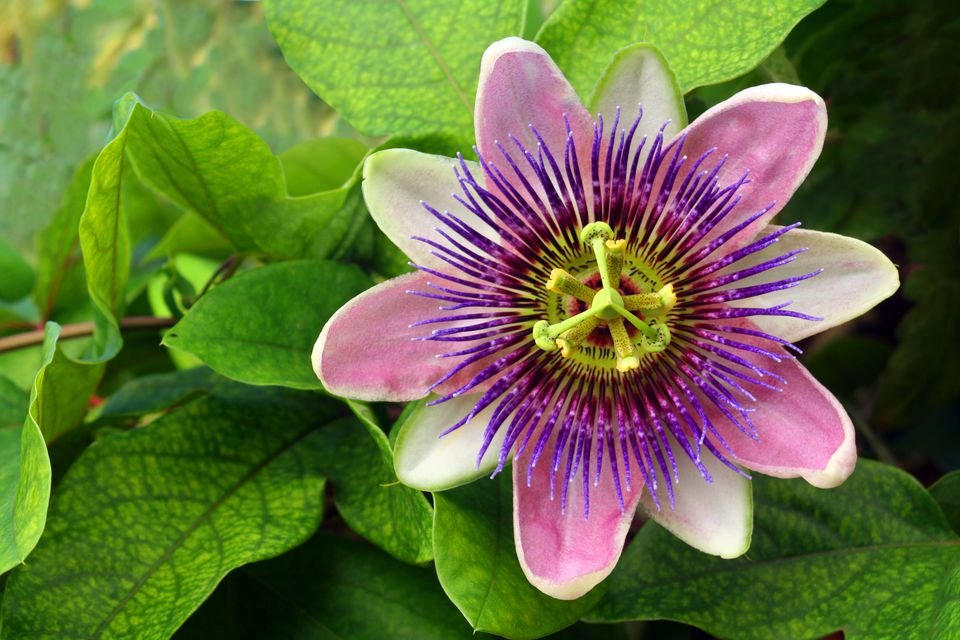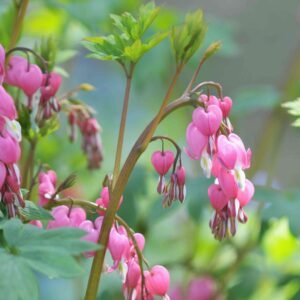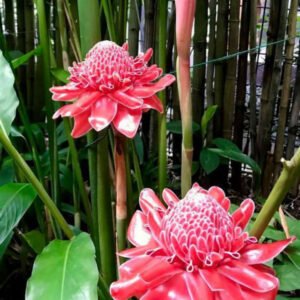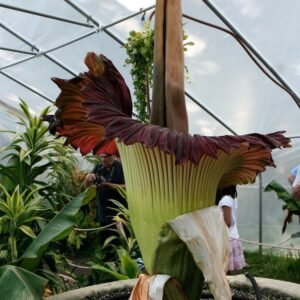Common Name: Passion Flower
Scientific Name: Passiflora spp.
Family: Passifloraceae
Origin: Native to the Americas, especially tropical and subtropical regions of South America
Physical Description:
-
Flowers:
Passion Flowers are highly intricate and exotic-looking, usually with a combination of purple, blue, white, and pink colors. The most recognized species, Passiflora caerulea (Blue Passion Flower), has a star-shaped flower with five sepals and five petals, surrounded by a fringe-like corona of filaments. At the center, prominent reproductive structures (stamens and styles) stand upright in a cross-like shape. -
Leaves:
Typically lobed (three to five lobes) and deeply cut, the dark green leaves add to the plant’s ornamental appeal. -
Vine Growth:
Passion Flowers are climbing vines that can reach 10–30 feet (3–9 meters) in length, using tendrils to attach themselves to structures.
Fruit:
-
Some species produce edible fruit, known as passion fruit (Passiflora edulis), which is round or oval, with a tough outer rind and aromatic, juicy pulp filled with seeds. It’s used in drinks, desserts, and culinary dishes.
Care Requirements:
-
Light: Thrives in full sun to partial shade.
-
Water: Needs regular watering, especially in dry periods, but prefers well-drained soil.
-
Temperature: Best in warm climates; many species are frost-sensitive.
-
Support: Requires a trellis or support structure to climb.
Symbolism & Uses:
-
Symbolism: Named by Spanish missionaries, the flower’s unique parts were interpreted as symbols of the Passion of Christ (e.g., 10 petals for the apostles, corona filaments for the crown of thorns, etc.).
-
Medicinal Use: Some species are used in herbal medicine for their calming and sedative effects.
-
Ornamental Use: Widely grown in gardens for its striking blooms and climbing habit.




Reviews
There are no reviews yet.